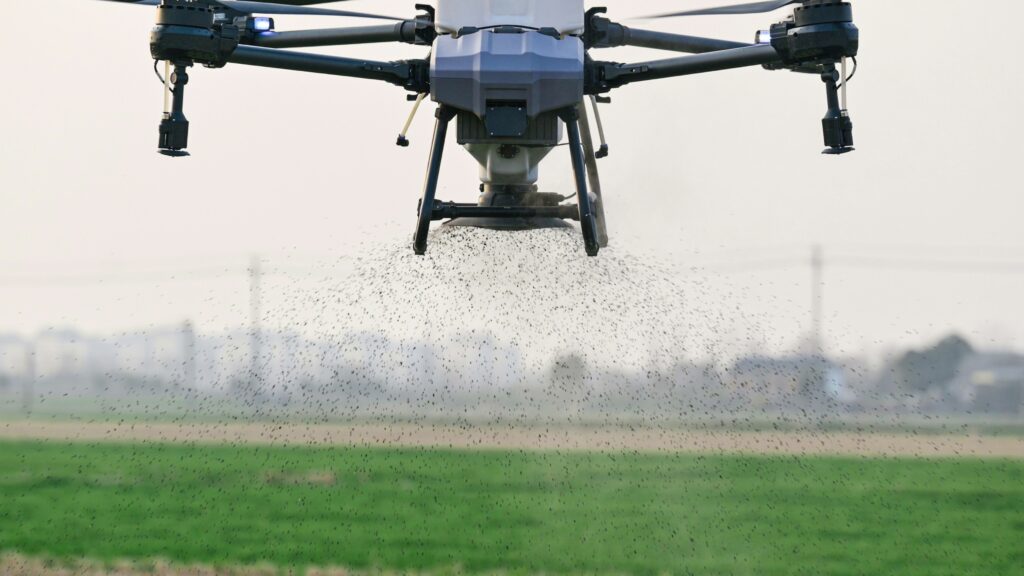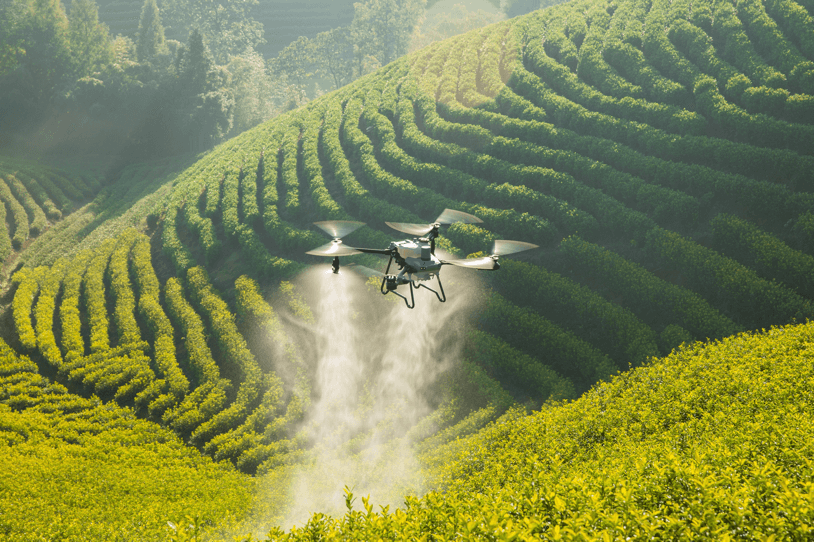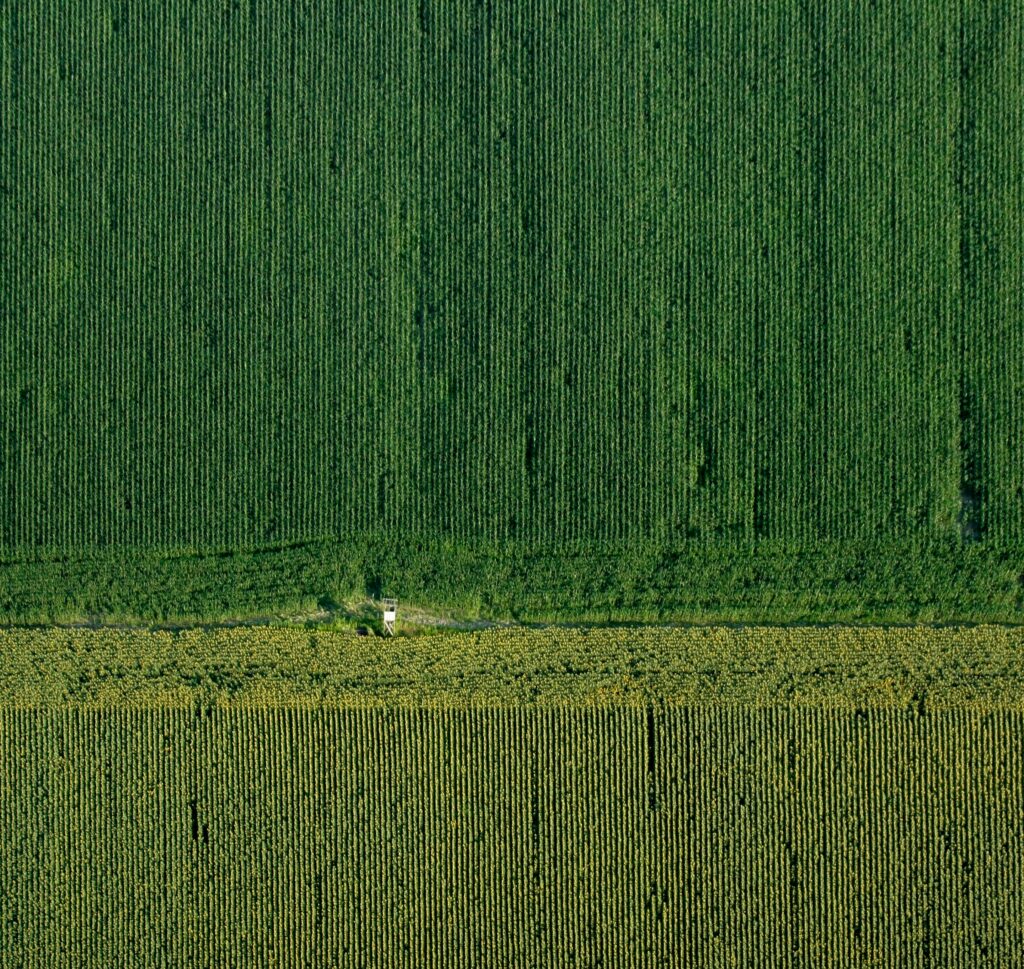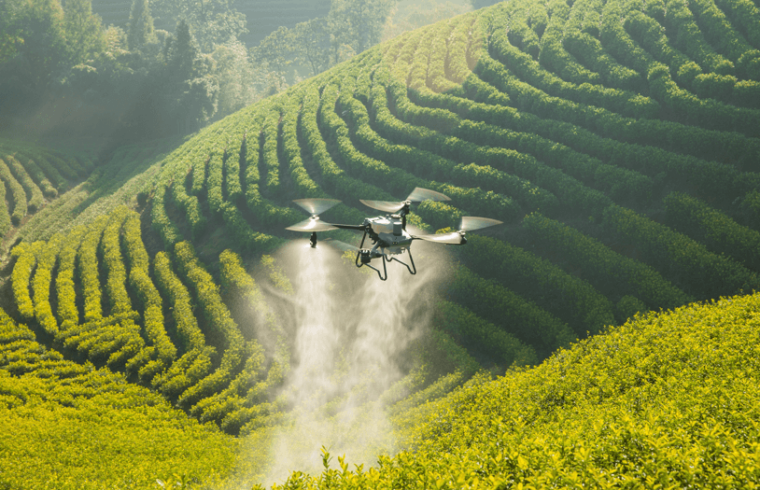Agriculture has always been at the forefront of technological advancements, from mechanization to genetic modification. Today, the fusion of artificial intelligence (AI) and drone technology is driving the next wave of innovation, transforming the way farmers monitor crops, apply resources, and maximize yield. AI-powered agricultural drones are helping farmers achieve efficiency and sustainability in ways never seen before.

The Role of Drones in Agriculture
Drones, or unmanned aerial vehicles (UAVs), have been increasingly adopted in farming due to their ability to provide aerial insights, automate tasks, and cover vast agricultural lands quickly. Their primary applications include:
- Crop Monitoring and Health Assessment: AI-equipped drones use multispectral and thermal imaging cameras to analyze plant health, detect diseases, and assess moisture levels.
- Precision Spraying: Drones can spray pesticides, herbicides, and fertilizers with pinpoint accuracy, reducing waste and minimizing environmental impact.
- Soil and Field Analysis: Pre-planting soil assessment using drone sensors can help optimize seed distribution and irrigation planning.
- Livestock Monitoring: Drones with AI-driven facial recognition can track herd movement, identify sick animals, and even prevent losses due to theft or predators.
- Disaster Management: AI-powered drones assist in assessing crop damage due to natural disasters, helping farmers and governments respond more effectively.
How AI Enhances Agricultural Drones
While drones alone provide aerial data, AI makes this data actionable. AI-powered image recognition and machine learning algorithms allow drones to:
- Detect Crop Diseases Early: AI systems analyze plant health by identifying discolorations, irregular growth patterns, or signs of infestation.
- Predict Yield: By examining plant density and soil health, AI can provide farmers with accurate predictions of harvest quantity.
- Optimize Water Usage: AI models assess moisture levels and suggest optimal irrigation schedules, helping conserve water resources.
- Enhance Autonomous Operations: Some advanced drones, such as DJI’s Agras series, can autonomously navigate fields, avoid obstacles, and adjust spraying patterns based on AI analysis.

Leading Companies in AI-Driven Agricultural Drones
Several companies are pioneering AI-driven drone solutions for farming:
- Gamaya: based in Switzerland, crop-specific models, built and tested from the ground up to incorporate the unique and complex actors impacting crop production
- DJI Agriculture: Known for its Agras T40 and Agras T20P, DJI integrates AI-powered spraying systems and real-time crop monitoring.
- PrecisionHawk: Uses AI-powered drones for high-resolution mapping and predictive analytics.
- SenseFly: Provides multispectral imaging solutions for precision agriculture.
- Rantizo: Specializes in drone-based precision spraying, reducing chemical usage while increasing efficiency.
Benefits of AI-Driven Agricultural Drones
The integration of AI and drones in agriculture brings numerous benefits:
- Increased Efficiency: Farmers can cover large areas in a fraction of the time compared to traditional methods.
- Reduced Costs: Automated drones lower the need for manual labor and excessive resource usage.
- Eco-Friendly Farming: Precision application of chemicals reduces environmental harm.
- Higher Yields: Data-driven decision-making leads to better crop management and improved harvests.
Challenges and Future Outlook

Despite their advantages, AI-powered agricultural drones face some challenges:
- High Initial Costs: Advanced drone technology can be expensive for small-scale farmers.
- Regulatory Restrictions: Some countries impose strict regulations on drone usage in agriculture.
- Data Complexity: AI-generated insights require interpretation, often necessitating farmer training or expert consultation.
As AI and drone technology continue to advance, these challenges are expected to lessen, making smart farming solutions more accessible. The future of agriculture is undeniably shaped by AI-powered drones, enabling more sustainable and productive farming practices.
Conclusion
Drones and AI are proving to be game changers in modern agriculture, offering farmers smarter ways to monitor crops, manage resources, and optimize yields. With leading companies such as DJI, PrecisionHawk, and SenseFly pushing the boundaries of innovation, the adoption of AI-driven agricultural drones is expected to increase. As this technology evolves, it holds the promise of making farming more efficient, sustainable, and profitable for future generations.
